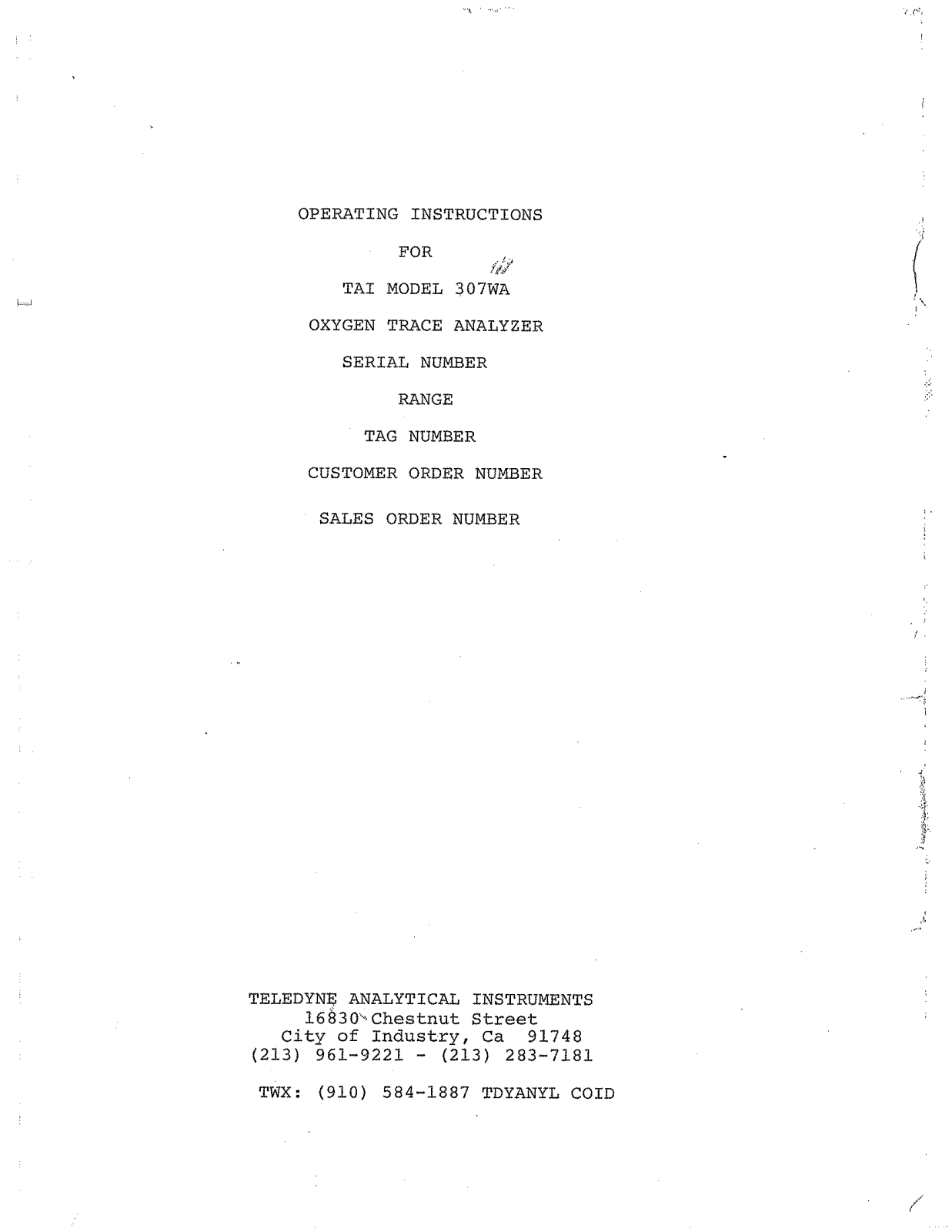Specifications and Main Features
- Model: TAI Model 307WA Oxygen Trace Analyzer
- Power Requirement: This device operates at 100-130V and consumes around 150W on both 50 and 60 cycles.
- Output Signal: The device has a millivolt output signal with a source impedance of approximately 100 ohms
- Sample Pressure: The device can work with a sample pressure between 1 to 100 psig but a value between 5 to 10 psig is recommended.
- Sample Flow Rate: This device has a sample flow rate of 150cc/min which translates to 0.32 SCFH.
- Thermostated Compartment Temperature: More information needed.
- Cell Electrolyte: TAI Type “A” is used in this device with electrolyte in distilled water with a concentration of 10% by weight.
- Humidifier: This device contains a control mechanism for humidifiers that is able to maintain humidity for sample examination.
- Calibration Method: It utilizes the method for calibration based on oxygen generation via electrolytic process while having adjustable inputs to known units.
- Operating Temperature Range: This device can operate in the temperature range of 30 to 120 degrees F.
- Housing: The device contains an explosion-proof analytical body and a non-explosive control module in the main housing.
- Maintenance Interval for Cell Electrolyte Replacement: Cell electrolytes need to be replaced after every 2 months or as it s required based on the device condition.
Frequently Asked Questions
Q: What is the purpose of the TAI Model 307WA Oxygen Trace Analyzer?
A: It is capable of continuously tracing and estimating the concentration of oxygen in a gas stream.
EXPERT STRATEGIES: PART II
Q: How is the oxygen measured in the analyzer?
A: Oxygen concentration is estimated based on an electrochemical cell that uses oxygen from the gas stream, furnishing a current which is generated in equal proportion to the oxygen used.
Q: What type of output does the analyzer provide?
A: The analyzer’s output is in milli volts and is calculated as a linear function related to the concentration of oxygen within the gas stream.
Q: What is the preferred sample pressure for the operation of the analyzer?
A: In order to facilitate the operation of the device, the measured sample pressure must vary in between the preferred range of 5 to 10 psig.
Q: In a timed basis, how often should the cell electrolyte be replaced?
A: The cell electrolyte should be reconstructed in an approximate time frame of 2 months, but the emphasis lies on replacement depending on contamination.
Q: Are different gas mixtures with the analyzer possible to use?
A: Different gases and gas mixtures can be used because the analyzer is capable of analyzing the amount of oxygen within any gas.
Q: What accessory equipment is needed for the analyzer to function properly?
A: An analyzer also requires a power supply, an output indicator or a recorder appropriate to the kind of analyzer in use, and sample conditioning equipment such as filters and regulators.
Q: What precautions should be taken regarding the sample lines?
A: To avoid the diffusion of oxygen and inhibit any possible error within the sample measurement the sample lines should be made out of metallic tubes.
Q: What steps are involved in calibrating the analyzer?
A: Calibrating the device encompasses rectifying the output of the analyzer with respect to an already determined quantity of oxygen that was previously injected into the sample stream.
Q: I was operating the device when it failed to respond, what do I do in that instance?
A: Ensure that the tiles are watertight, if the issue still occurs, check the connections, or verify if there is an adequate electrolyte level. The cell should also be washed if the fluids inside the cell are dirty. If these strategies were ineffectual, the cell would likely have to be replaced.
User Manual


















































